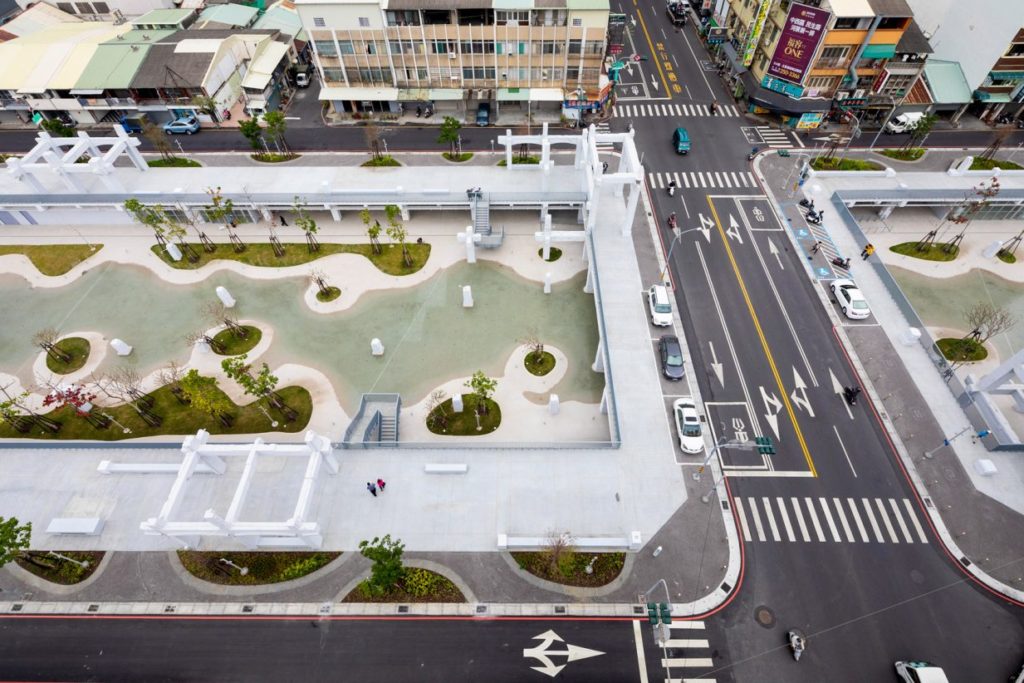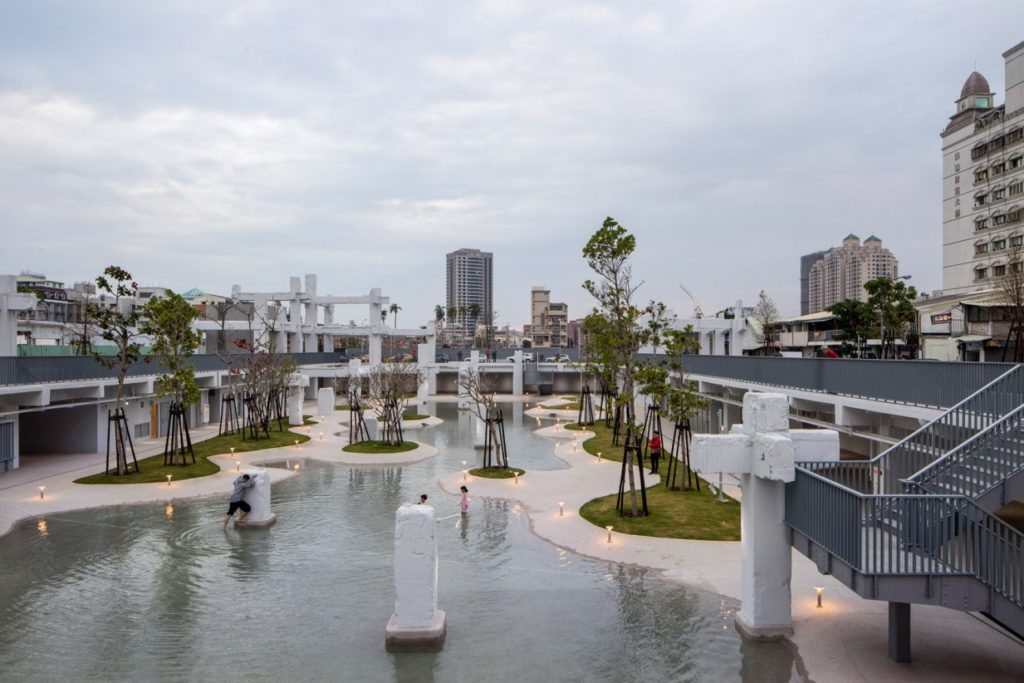Transformations of Forgotten Malls Shows the Immense Power of Adaptive Reuse

Got an innovative adaptive reuse project of your own? Enter it in the new Architecture +Adaptive Reuse categories in the 8th Annual A+Awards for a shot at international publication and global recognition. Submit your projects this week to be in the running.
The skeleton of an old shopping center is now Tainan Spring, a park and public pool designed by MVRDV in southern Taiwan.

Labelled by MVRDV as a “lush lagoon”, the project sits at the site of what was once China-Town Mall, located near Tainan’s historic canal network. It forms part of a wider masterplan to rejuvenate the area and acutely “…shows what solutions are possible for unused shopping malls now that online shopping is supplanting physical stores,” according to the architects.
The space has been infused with local plants that will grow and spread over time. Tainan Spring will offer the city a green public space that mimics surrounding natural landscapes.

Unused and decaying, the former mall had become a “drain on the vitality” of the city. Rather than demolished and replaced with another shopping center or development, China-Town Mall was recycled and reformed.
As stated by MVRDV, “The mall’s underground parking level has been transformed into a sunken public plaza dominated by an urban pool and verdant local plants and surrounded by a shadowed arcade.” Furthermore, the pool has been planned to be an adequate gathering spot across all seasons, in which the water level will rise and fall in response to the rainy and dry seasons.
In hot weather, mist sprayers will reduce the local temperature to provide relief and reduce the need for air conditioning. 
Tainan Spring seeks to serve its community as an accessible public space that will host playgrounds, gathering spaces, and a stage for performances. The deconstruction of the structure’s concrete frame left a number of follies that can be converted into spaces for shops or kiosks in the future. Not only does Tainan Spring serve as a multifunctional, public space, it also helps improve pedestrian pathways and reduce traffic in the city.

The work MVRDV has done with Tainan Spring opens a broader discourse on how we approach dated or “dead” typologies like malls. In a world where virtual technology vastly outpaces physical systems, the built environment is almost perpetually left behind.
The cost is wasted space and altogether urban decay, which leads decision makers to a crossroads: the path towards urban renewal or urban revitalization. The former functions to clear out and replace with higher socio-economic entities, whereas the latter seeks to reuse and recycle.

The case of Tainan Spring is an example of this decision to reuse. MVRDV’s project has given a second life to an obsolete space, making use of pre-existing elements in a new, sustainable way that improves its environment and inhabitants. A similar case can be found in Providence, Rhode Island at the Westminster Arcade, America’s first shopping mall.
According to Country Living via Archinect, “…the formerly abandoned mall has been transformed into a new commercial and residential hub for micro-apartment living. Rather than demolishing the building, developers wanted to preserve the structure not only for its historical value, but for its housing potential.”

The former Westminster Arcade; image courtesy of Rhode Island Collection

The Arcade Providence; image courtesy of The Arcade Providence
Named The Arcade Providence, the former mall will feature a micro-loft apartment complex that includes 48 rentable units. The project is being lead by Northeast Collaborative Architects along with developer Evan Granoff.
Tainan Spring and The Arcade Providence are just two examples of how forgotten spaces can be reformed into serviceable projects applicable for today’s needs. They’re sustainable and present unique, innovative, and creative solutions for the blights of their surrounding urban environments.
All images of Tainan Spring via MVRDV
Architects: Showcase your next project through Architizer and sign up for our inspirational newsletter.
The post Transformations of Forgotten Malls Shows the Immense Power of Adaptive Reuse appeared first on Journal.
, Nathaniel Bahadursingh, read more Journal https://bit.ly/2Ug3xO8
Yorumlar
Yorum Gönder